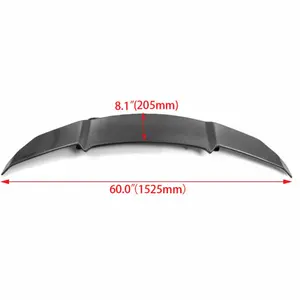Maintenance of Electric Spoilers
Proper maintenance ensures optimal performance, longevity, and safety of your electric spoiler system. Follow these expert-recommended maintenance procedures to keep your spoiler functioning correctly.
Regular Inspection
Perform visual inspections of your electric spoiler monthly or every 5,000 miles to identify potential issues early.
Check for:
- Cracks or damage to the spoiler surface
- Loose mounting hardware or connections
- Signs of motor strain or unusual noises during operation
- Proper alignment and level positioning when deployed
Cleaning Procedures
Proper cleaning preserves both appearance and functionality while preventing contamination of mechanical components.
Recommended process:
- Use pH-neutral automotive soap and warm water
- Clean with a microfiber cloth to prevent scratching
- Avoid pressure washers directed at motor housing
- Apply automotive wax to non-moving surfaces every 3 months
- Remove road salt immediately in winter conditions
Lubrication Schedule
Proper lubrication of moving components ensures smooth operation and prevents premature wear.
Apply every 6 months or 10,000 miles:
- Silicone-based lubricant for plastic tracks and guides
- Lithium grease for metal-on-metal contact points
- Dielectric grease for electrical connections
Avoid: WD-40 and petroleum-based products that can degrade plastic components
Electrical Maintenance
Maintaining the electrical system prevents operational failures and potential electrical issues.
Every 12 months:
- Inspect all wiring harnesses for chafing or damage
- Clean electrical connectors with electronic contact cleaner
- Check motor current draw during operation (should be 4-8 amps)
- Verify switch contacts for corrosion or pitting
Seasonal Preparation
Taking extra precautions during winter months protects your electric spoiler from harsh weather conditions.
Winter preparations:
- Apply silicone spray to rubber seals to prevent freezing
- Ensure drain holes in housings are clear to prevent water accumulation
- Consider limiting operation in extremely cold conditions (-10°C/14°F or below)
- Clean thoroughly after exposure to road salt or brine

































































































































































































































































 浙公网安备 33010002000092号
浙公网安备 33010002000092号 浙B2-20120091-4
浙B2-20120091-4